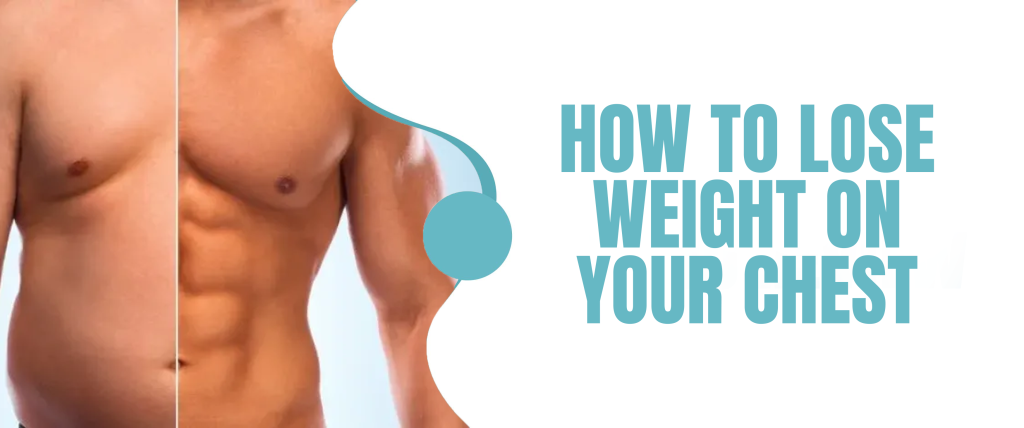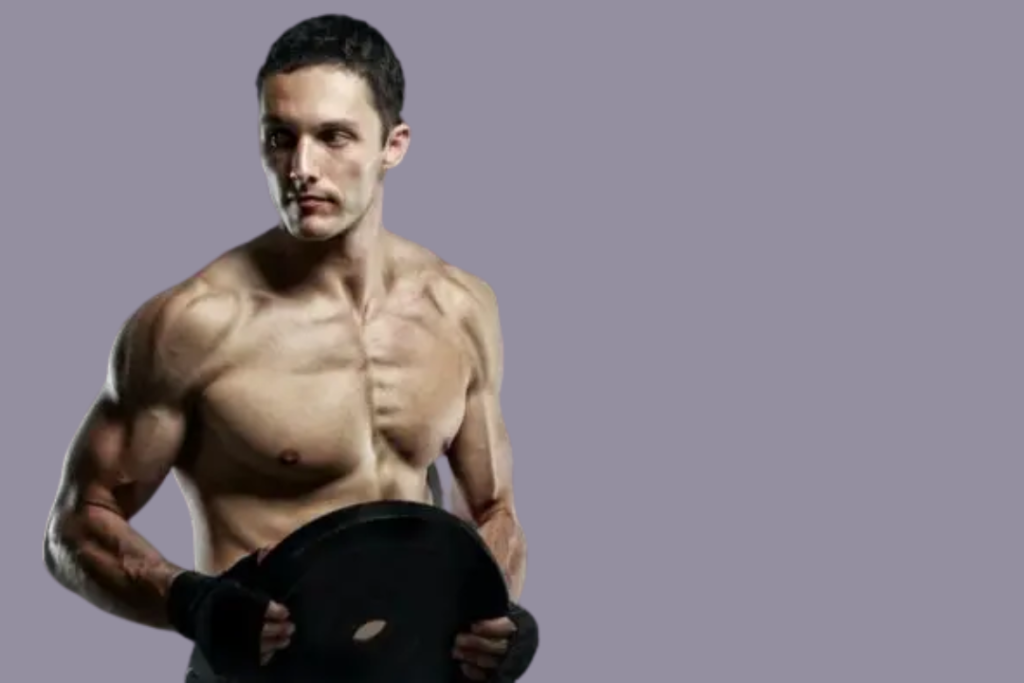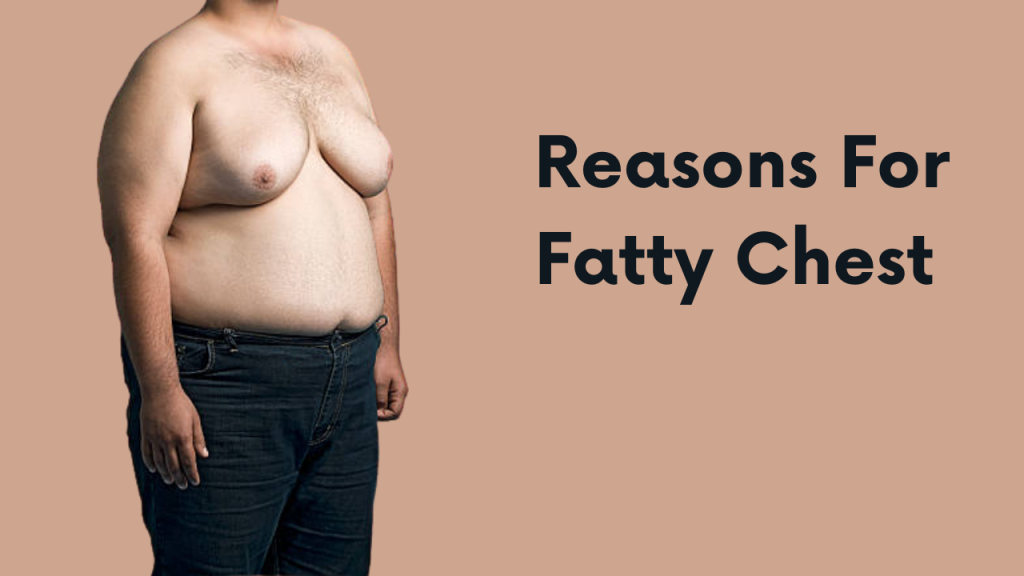|
Getting your Trinity Audio player ready...
|
Reviewed by: Dr. Sadie Wegler
Fact Checked by: Dr. Jordan Wheeler Kincaid

Are you looking for how to lose weight on your chest? If you are a gym person, you must be aware of a day called chest day in the gym cycles. Yes, your chest got a particular day in the gym. But why so?
Losing weight from the chest is quite an uphill task. Shaping those tough muscles needs all your body strength and dedication. Not only this, but your calorie counter also helps build a strong foundation for your chest.
A person’s BMI can be calculated by dividing their weight in kilograms (kg) by their height in square meters. But don’t worry, it might sound like a hard project to achieve, but here are some super easy tricks to shred the extra fat on your chest. Let us take a quick look at that.
The Best Exercise To Reduce Chest Fat
Three primary muscles need to be focused on while burning chest fat. They are:
- Pectoralis major
- Pectoralis minor
- Serious anterior
All the exercises listed below about how to lose weight on your chest are designed to give more emphasis on these three muscles. In addition, shoulder, back, and abdominal muscles also help build a strong chest during the exercise routine.
When it comes to the routine it is necessary to follow all the below eight exercises on a daily purpose to lose chest fat. Without the consistent practice of these exercises, losing weight from the chest would be next to impossible.
Incline Pushups
This exercise is mandatory to give a nice warm-up to the body. Warm-up exercise prepares the muscles for an intense workout routine.
Keep your hands on the wall above your head. Make a 45 degrees angle with the floor. Now lower your chest and bring it back to the initial position.
Flat Bench Press
Lie on your back on the bench. Keep your feets flat on the floor with bent knees. This will be your initial position. Now hold the dumbbells in your hand and lift them toward the ceiling. Hold the position for 20 seconds and come back to the initial appointment.
Keep your back straight, and your hands stretched for better results in this exercise. Please do not hold the dumbbells for too long seconds as it may cause injury in any mishap.
Incline Bench Press
This exercise is one step ahead of the flat bench press. Take the initial position as told in the previous one. Now position the weight above your collarbone.
Take the weight down to your chest level and hold the position for 20 seconds. Then bring the weights back to their initial position.
Decline Bench Press
This exercise is just the reverse of the incline bench press. Take the initial position as told in the flat bench press. Now position the weights from your lower chest to the abdominal region.
Now bend your elbows to take the weights down to your chest and hold the position for 20 seconds. Then bring the weights back to their initial position.
Remember, in the above three exercises; you can alter the time duration of holding the weights according to the body capacity.
Pushups
This is a well-known exercise for all fitness enthusiasts trying to keep their chests in shape while questioning how to lose weight on your chest.
To begin this exercise, take the classic plank position. Keep your hands wider than the shoulders and legs straight. Keep your core tight, and bend your elbows to bring your chest towards the floor.
Go as low as you can on the floor and return to the initial position.
Cable Crossover
You need a cable machine or resistant band anchored above your height for this exercise. Grab both the handles of the cables and bring the handles in front of your chest.
Hold the position there and try to get the handles to your core with the extra flexion of your chest muscles.
Hold the second position and slowly return to the initial.
Chest Dip
For this exercise, you need to have a dip station. Grasp the two bars of equipment with your palm tightly. Straight your elbows and lift your body in an upward direction.
Then bend your body and lower your chest towards your hands. Hold the position for 20 seconds and come back to the starting position.
Resistance Band Pullover

For this exercise, you need a resistant band. Anchor the band above your height and stand facing the opposite direction from the band.
Grab the band with your palms and bring them down towards your hips. Hold the position for some time, and then slowly return the band over your head.
Setting A Minimum Number
When you are trying to lose weight from a particular chest part in the body, the repetition of exercise sets naturally increases. Selecting a specific number for yourself according to your body capacity will help you lose the extra pounds from your chest.
Initially, perform the exercise in the minimum numbers repeating eerie sets only three times in a row. Once your body becomes habitual, you may increase the number according to the body’s capacity.
Hydration Is Necessary
The guide on how to lose weight on your chest is incomplete without the mention of proper hydration of your body. Never let your body dehydrate in the middle of the session while performing chest exercises.
It may lead to a negative impact on the body when your focus is on losing weight. To avoid such conditions, try to take sips between your intense sessions. If this is too hectic for you, take a break after 3-4 sets of exercise.
You can also replace your normal water with energy drinks or protein shakes, or any other alternatives you like. It will boost your energy throughout the session and makes you feel more energetic to go for one more round.
Role Of Diet
Whether losing weight from a particular part of the body or all together, a calorie checker is a must. Exercising without the calorie controller feels like going on a blind road without any destination or directions. The food you intake directly affects your body when it comes to fat distribution.
Some people accumulate extra fat layers in their chest muscles, making their chest seem bulkier than the other body parts. Keeping a check on the diet is a must with heavy exercise if they focus on removing those extra layers of fat from the chest region.
Some of the dietary habits that you should avoid when you are focusing on lowering your chest fat are-
- Taking sugars in any form
- Excessive alcohol intake
- Taking highly processed foods
- Taking large protein size foods
- Bringing plenty of vegetables all together
Other Reasons For Fatty Chest

It is important to know the reasons before knowing how to lose weight on your chest. When it comes to chest fat, with increasing age, many people have experienced that their chests become saggy and bulky.
In old age, their muscle fibers become weak, giving the appearance of a fatty chest. However, some other reasons may include:
- Sedentary lifestyle
- Unhealthy diet plans
- Distribution of body fat
- Inadequate exercise
- Expanding fat cells of the chest region
- Underlying disease
- Development of any tumor in the chest region
Bottom Line
When it comes to losing weight, chest exercise and diet, both go hand in hand to achieve the desired results. Chest muscles are always considered the defining part of the anatomy. From bodybuilders to powerlifters, fat-free chest muscles are a must.
In addition to this, chest muscles also help in many arm movements. A Fat chest can restrict the free movement of chest muscles. This is why losing chest fat is an important factor because they work as the functional starting point of the body. Start with these tips on how to lose weight on your chest, and see how much better your chest looks and feels in just a few weeks!
[1]
1. Champagne CM, et al. (2011). Dietary intakes associated with successful weight loss and maintenance during the weight loss maintenance trial. DOI:
10.1016%2Fj.jada.2011.09.014
2. Cuhaci N, et al. (2014). Gynecomastia: Clinical evaluation and management. DOI:
dx.doi.org/10.4103%2F2230-8210.129104
3. Mayo Clinic Staff. (2018). Enlarged breasts in men (gynecomastia).
mayoclinic.org/diseases-conditions/gynecomastia/symptoms-causes/syc-20351793
4. Some myths about nutrition and physical activity. (2011).
niddk.nih.gov/health-information/weight-management/myths-nutrition-physical-activity
5. Baumann, K. (2018). Gynecomastia — conservative and surgical management.
https://www.ncbi.nlm.nih.gov/pmc/articles/PMC6381901/
6. Body mass index (BMI) in adults. (2014).
https://www.heart.org/en/healthy-living/healthy-eating/losing-weight/bmi-in-adults
7. Dickson, G. (2012). Gynecomastia.
https://www.aafp.org/afp/2012/0401/p716.html
8. Gardner, C. D., et al. (2018). Effect of low-fat vs low-carbohydrate diet on 12-month weight loss in overweight adults and the association with genotype pattern or insulin secretion: The DIETFITS randomized clinical trial.
https://www.ncbi.nlm.nih.gov/pmc/articles/PMC5839290/
9. Gynecomastia. (n.d.).
https://www.hopkinsmedicine.org/health/conditions-and-diseases/gynecomastia
10. Physical activity calories burn. (n.d.).
https://www.choosemyplate.gov/resources/physical-activity-calories-burn
11. Stewart, K. J. (n.d.). Weight loss and diet.
https://www.hopkinsmedicine.org/heart_vascular_institute/centers_excellence/womens_cardiovascular_health_center/patient_information/health_topics/weight_loss_diet.html
12. Stockman, M.-C., et al. (2018). Intermittent fasting: Is the wait worth the weight?
https://www.ncbi.nlm.nih.gov/pmc/articles/PMC5959807/
13. Wewege, M., et al. (2017). The effects of high-intensity interval training vs. moderate-intensity continuous training on body composition in overweight and obese adults: A systematic review and meta-analysis [Abstract].
https://www.ncbi.nlm.nih.gov/pubmed/28401638
14. Zhu, K., et al. (2019). Relationship between vitamin D status from childhood to early adulthood with body composition in young Australian adults.
https://www.ncbi.nlm.nih.gov/pmc/articles/PMC6382407/
- Unlocking Els Pet: A Comprehensive Guide For New Purchasers - August 9, 2024
- Laser Hair Removal Costs in the US – Complete Guide - April 13, 2024
- Quinoa for Weight Loss – Effective Tips & Healthy Recipes - April 1, 2024
References
| 1 |
1. Champagne CM, et al. (2011). Dietary intakes associated with successful weight loss and maintenance during the weight loss maintenance trial. DOI: 2. Cuhaci N, et al. (2014). Gynecomastia: Clinical evaluation and management. DOI: 3. Mayo Clinic Staff. (2018). Enlarged breasts in men (gynecomastia). 4. Some myths about nutrition and physical activity. (2011). 5. Baumann, K. (2018). Gynecomastia — conservative and surgical management. 6. Body mass index (BMI) in adults. (2014). 7. Dickson, G. (2012). Gynecomastia. 8. Gardner, C. D., et al. (2018). Effect of low-fat vs low-carbohydrate diet on 12-month weight loss in overweight adults and the association with genotype pattern or insulin secretion: The DIETFITS randomized clinical trial. 9. Gynecomastia. (n.d.). 10. Physical activity calories burn. (n.d.). 11. Stewart, K. J. (n.d.). Weight loss and diet. 12. Stockman, M.-C., et al. (2018). Intermittent fasting: Is the wait worth the weight? 13. Wewege, M., et al. (2017). The effects of high-intensity interval training vs. moderate-intensity continuous training on body composition in overweight and obese adults: A systematic review and meta-analysis [Abstract]. 14. Zhu, K., et al. (2019). Relationship between vitamin D status from childhood to early adulthood with body composition in young Australian adults. |
|---|
